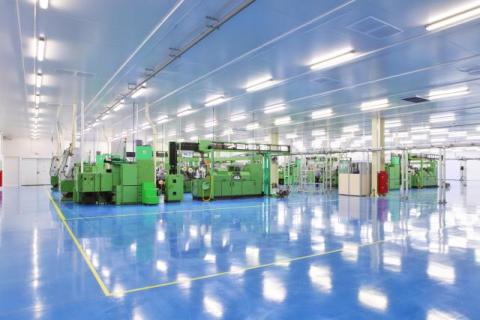Improved lighting can reduce worker fatigue and accidents
September 3, 2021Have you ever been in a building with harsh, fluorescent lights and experienced relief once you stepped outside into natural light? Or have you been reading and gotten a headache and suddenly realize that you’ve been straining your eyes because the lights were too dim?
Indoor lighting plays a key role in contributing to the comfort and safety of the people using that building, particularly in work environments such as factories. Either too much or too little light can result in fatigue, eye strain, headaches, and even accidents or errors.
As reported in the International Labour Organization’s Occupational Safety and Health (OSH) Brief, “improved lighting in some factories resulted in a 10% increase in productivity and a 30% reduction in errors.”
While some may be concerned with the cost of changing the lighting within a factory, changes can often be made to existing lights at little to no cost, and the potential for improved productivity and reduction in errors may improve a factory’s bottom line.
How Facilities and Construction Managers Can Change Lighting for the Better
According to the brief, one of the best ways to improve lighting is to make the best use of the natural light available. This includes ensuring all windows or other natural light sources are clean and in the best position.
Glare can be a major issue within factories. The brief covers three types of glare: disability, discomfort, and reflected. With disability glare, a worker is hit with an unexpected amount of light directly in their eye, and may result in accidents. Discomfort glare occurs when a worker is exposed to too-bright lights for an extended amount of time. Reflected glare happens when shiny surfaces cause light to reflect into a worker’s line of sight.
There are solutions to preventing and reducing glare, such as shades or blinds on natural light sources. Light-colored matte paint shades can also improve lighting and reduce glare. Translucent or opaque materials can be used instead of or to cover reflective surfaces.
Another suggestion is to ensure that the light is focused on the task at hand, and not the workers’ eyes or in a position that impacts the workers’ posture. It should also be customized to the specific task.
“The more detailed the task, the more light that is needed for the workers to carry out the job efficiently,” states the brief.
OSH’s Recommended Rules for Lighting
The brief offers up six simple rules for lighting:
- Make full use of daylight in the factory.
- Choose appropriate visual backgrounds for walls, ceilings, etc.
- Find the best place for the light source to avoid glare, etc.
- Use the most appropriate lighting devices and fixtures.
- Avoid shadows.
- Ensure regular cleaning and maintenance of lights and windows.
By following these rules and making simple changes like correcting the positioning of lights and changing the layout of workstations can greatly improve workers’ quality of life, reduce errors, and improve efficiency.
Learn more about Capitol Tech’s degree programs in Construction, Facilities, and Safety. Many courses are available both on campus and online. For more information, contact admissions@captechu.edu.



